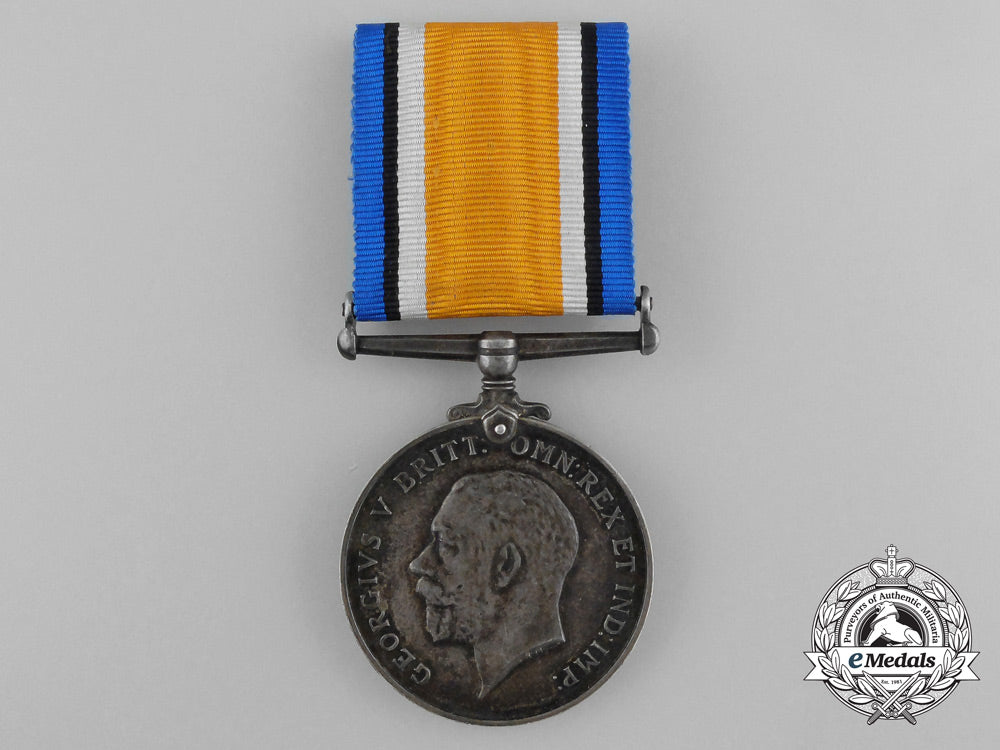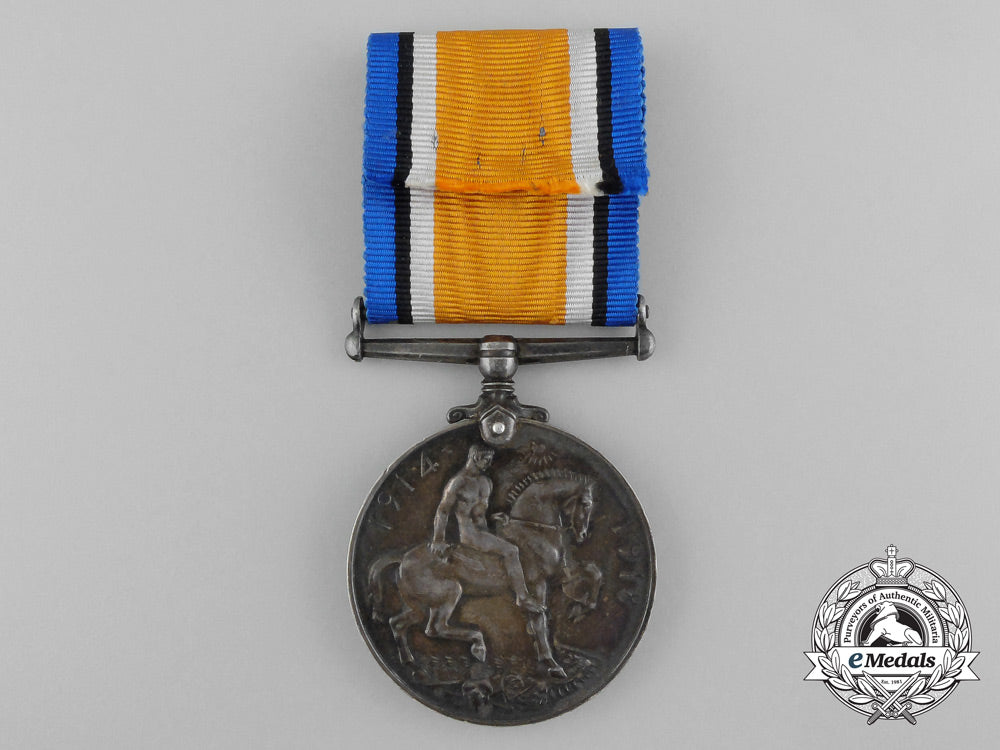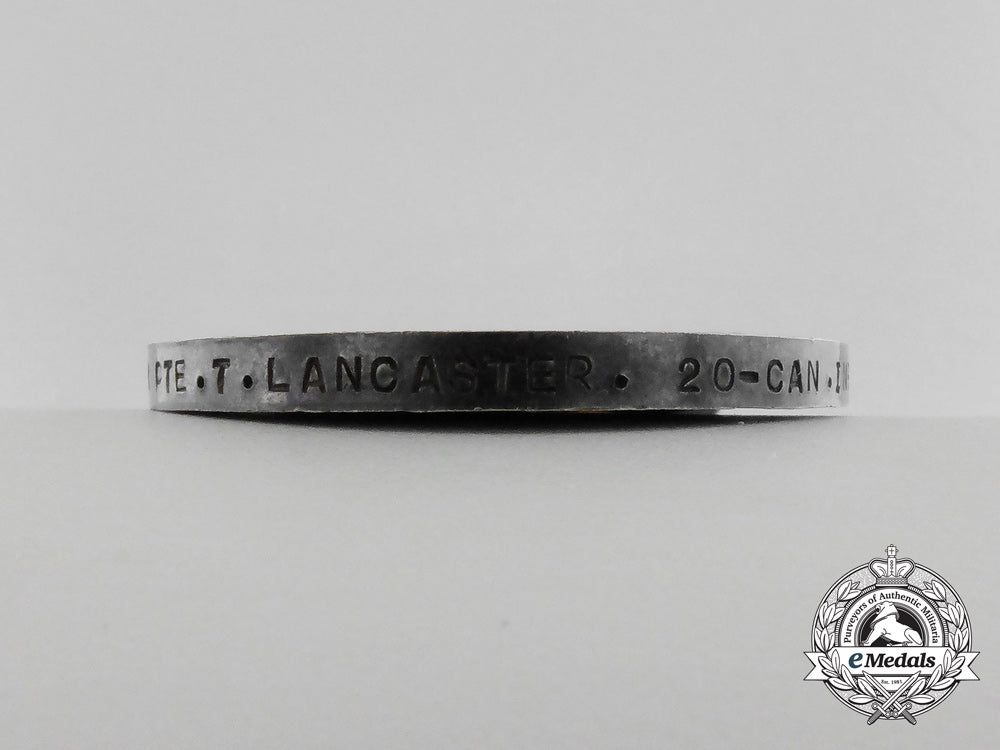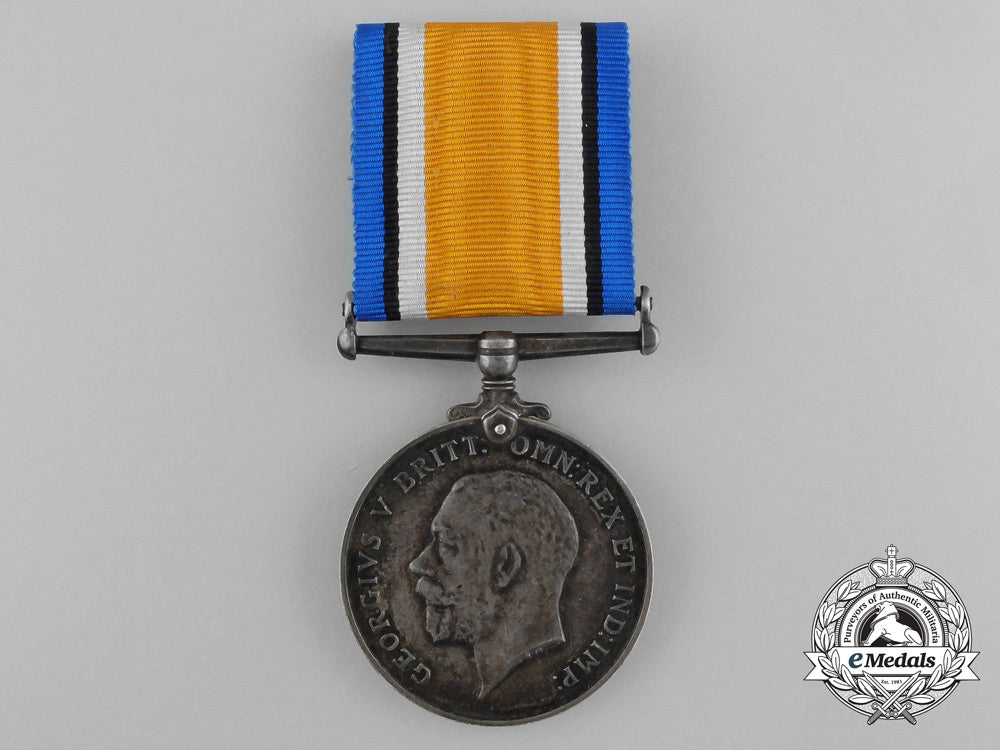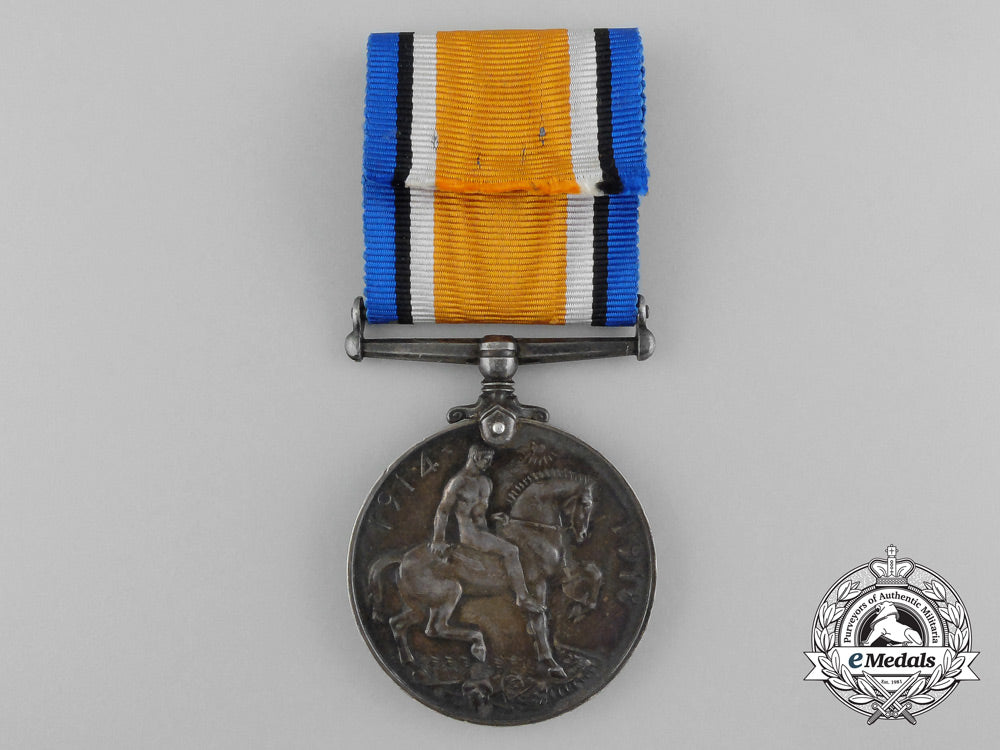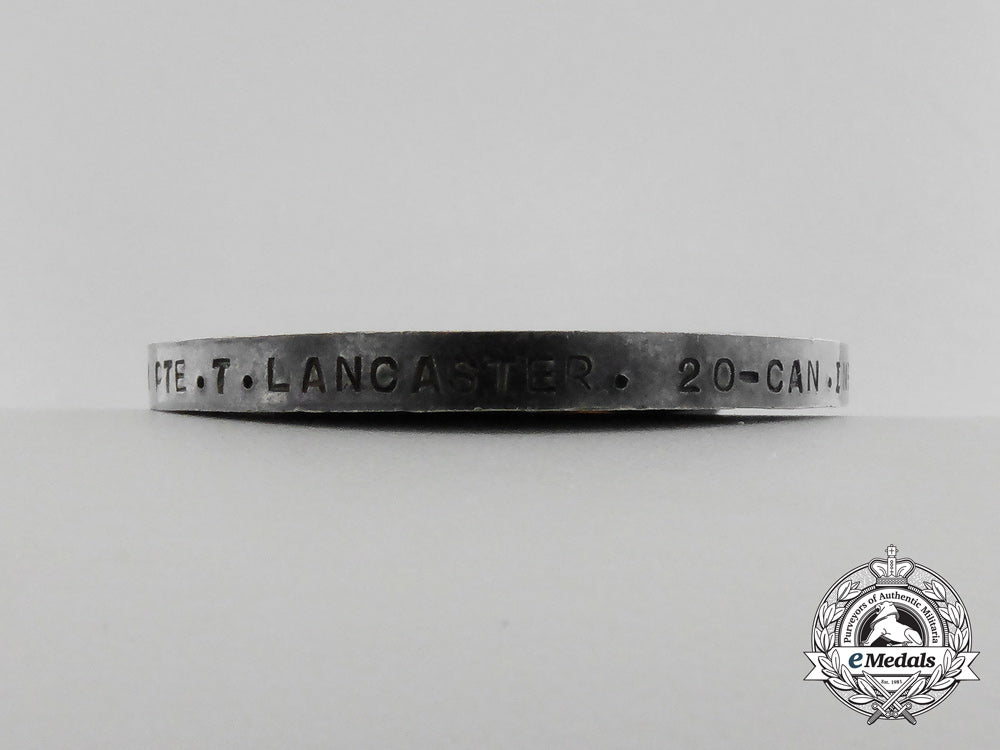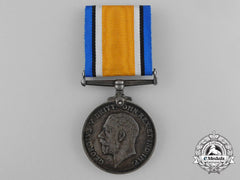
LOADING ...
In response to evolving domestic opinion, eMedals Inc has made the conscious decision to remove the presentation of German Third Reich historical artifacts from our online catalogue. For three decades, eMedals Inc has made an effort to preserve history in all its forms. As historians and researchers, we have managed sensitive articles and materials with the greatest of care and respect for their past and present social context. We acknowledge the growing sentiments put forth by the Canadian public and have taken proactive actions to address this opinion.
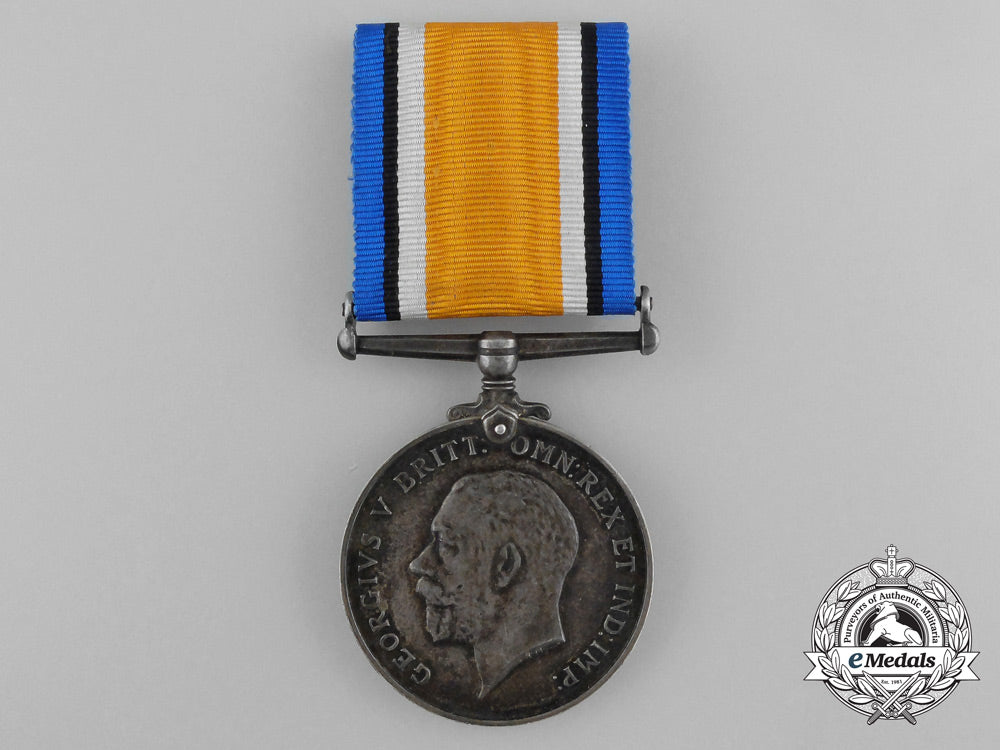
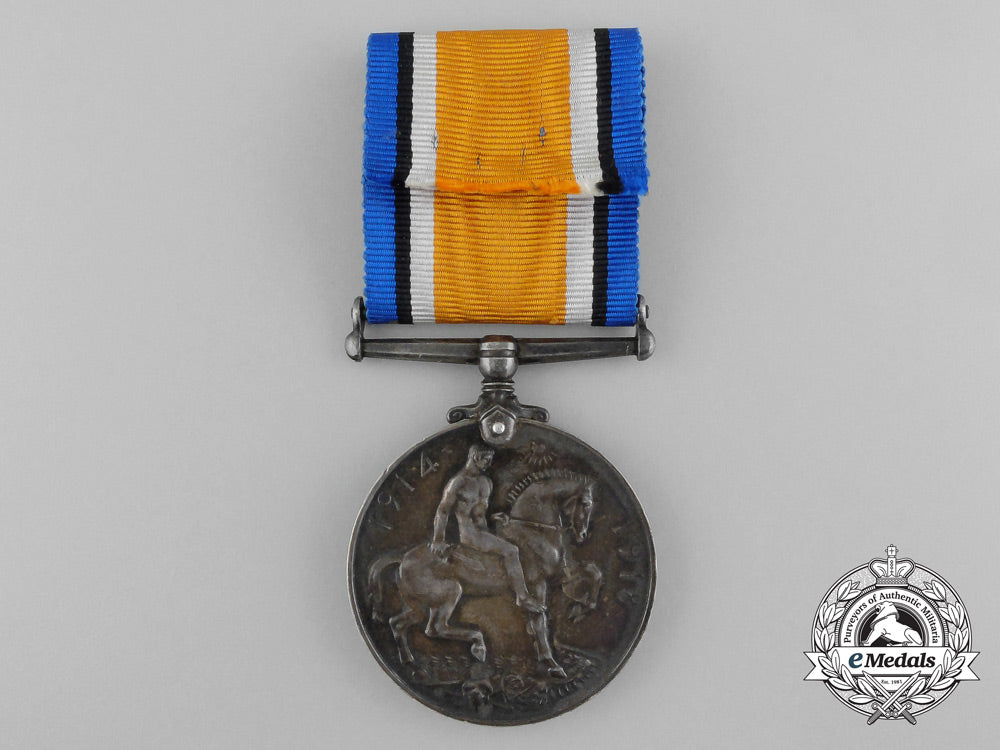
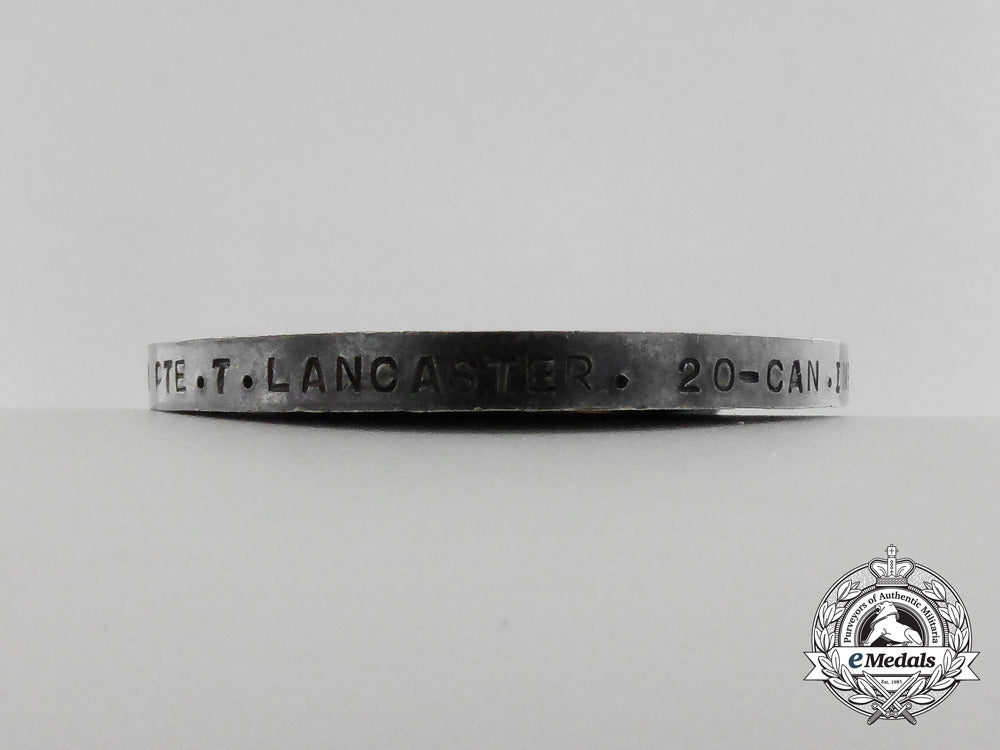
Canada. A War Medal To The 20Th Infantry Battalion
Canada. A War Medal To The 20Th Infantry Battalion
SKU: ITEM: C4401
0% Buyer's Premium
Current Bid:
Your Max Bid:
Bid History:
Time Remaining:
Couldn't load pickup availability
Shipping Details
Shipping Details
eMedals offers rapid domestic and international shipping. Orders received prior to 12:00pm (EST) will be shipped on the same business day.* Orders placed on Canadian Federal holidays will be dispatched the subsequent business day. Courier tracking numbers are provided for all shipments. All items purchased from eMedals can be returned for a full monetary refund or merchandise credit, providing the criteria presented in our Terms & Conditions are met. *Please note that the addition of a COA may impact dispatch time.
Shipping Details
eMedals offers rapid domestic and international shipping. Orders received prior to 12:00pm (EST) will be shipped on the same business day.* Orders placed on Canadian Federal holidays will be dispatched the subsequent business day. Courier tracking numbers are provided for all shipments. All items purchased from eMedals can be returned for a full monetary refund or merchandise credit, providing the criteria presented in our Terms & Conditions are met. *Please note that the addition of a COA may impact dispatch time.
Description
Description
(57670 PTE. T. LANCASTER. 20-CAN.INF.). Replacement ribbon, dark patina, contact marks, very fine.
Footnote: Thomas Lancaster was born on September 30, 1881 (although one mention in his medical records states the year as 1878) in Preston, England. He served during the South African War in 1900-1901 with the King's Own (RoyalLancaster Regiment). He later immigrated to Canada, where he contracted Rhumatic Fever in 1911, along with a case of the Measles but recovered. Lancaster was a resident of Toronto, Ontario when he signed his Attestation Paper (57670) with the 20th Infantry Battalion "1st Central Ontario Regiment", on November 12, 1914 in Toronto, at the age of 33, naming his next-of-kin as his wife, Annie Lancaster of Toronto, stating the he belonged to an Active Militia, that he had three years' previous service with the King's Own (Royal Lancaster Regiment), that he was Married and that his trade was that of Window Cleaner. He was posted to "C" Company, 20th Infantry Battalion. During his medical examination, it was noted that he had tattoo marks on both arms: a crucifix and small cross on his right arm, along with a heart with clasped hands, a cross, a heart and anchor, and a British flag and drum on his left arm. As of August 14, 1916, it was noted that he was married and two sons, ages 10 years and 16 months, respectively. The Battalion was raised in Central and Northern Ontario and mobilized in Toronto under the authority of G.O. 36, March 15, 1915. The Battalion sailed May 15, 1915 aboard the S.S. Megantic, under the command of Lieutenant-Colonel J.A.W. Allen, with a strength of 35 officers and 1,100 other ranks, arriving in England on May 24th. A little under three months after arriving in England, he was found to be Absent Without Leave on August 12, 1915. He subsequently forfeited ten days pay and was confined to base. He was transferred to Base Company on September 1st, but was again found to be Absent Without Leave on the 2nd, and remaining so until the 7th. For this infraction, he was awarded 144 hours detention (twelve days). A week after his transfer to Base Company, he was transferred to the 30th Reserve Battalion on September 14th. Seven months later, he was transferred to the 35th Reserve Battalion on April 22, 1916. Private Lancaster was admitted to Moore Barracks Military Hospital at Shorncliffe on May 15, 1916, with boils on the right knee. He had been experiencing pain in the knee for the previous ten days. The malady "started as (a) small pimple, hit in on (the) edge of (the) bed which opened the head of (the) pimple and caused much bleeding. Kept getting larger ever since." While in hospital, he developed a temperature of 102 degrees Fahrenheit and was transferred to Horton (County of London) War Hospital (formerly the London County Asylum, Horton, Epsom) on May 21st. He was diagnosed with Influenza, which developed into Chronic Bronchitis, his hospital stay at Horton lasting eight weeks, before being transferred to the Canadian Convalescent Hospital at Woodcote Park, Epsom, Surrey on July 12th. In his Medical Report of an Invalid, dated July 31, 1916 at Woodcote Park, the doctor noted that Lancaster's traced the origin of his medical issues to April 8, 1916 while at West Sandling: "Early in April (he) was in hospital with (an) infected knee at Moore Barracks. 8 days later he was sent to this hospital, at the same time he was developing influenza, he remained here one night, and was sent to Horton with a temperature of 102 (Fahrenheit), remained there nearly two months and returned here July 12/16. He now has Chronic Bronchitis. Volunteered for France four times but was rejected on account of bad feet. No T.B. (Tuberculosis) found in sputum, either at Horton or here." The doctor also noted he "Has lost weight. Has chronic cough with expectoration of thick phlegm. Always in profuse perspiration, feels weak. Dyspnea (difficult or laboured breathing). Cannot walk more than 100 yards without resting." and determined that Lancaster's condition would not be a permanent disability, as long as he had "six months if in (a) dry climate" and that he would be fine to return to the general labour market after the war. Twenty-seven days after being admitted to Woodcote Park, he was discharged from hospital on August 8th. Private Lancaster again ran afoul of the authorities, when he was awarded 28 days Field Punishment No. 2 on August 6, 1916, for assaulted an NCO while in barracks at West Sandling. Field Punishment No. 2 involved the sentenced soldier being placed in fetters and handcuffs but was not attached to a fixed object, as per Field Punishment No. 1. This allowed a soldier to still be able to march with his unit and was a relatively tolerable punishment. He also forfeited 28 days' pay. He was placed on command at the Canadian Discharge Depot at Bath for discharge on August 11, 1916. In his CEF Pensions and Claims Board Declaration, dated August 14, 1916 at Prior Park, Bath, the Board made two recommendations: "1. That this man's discharge be not carried out until he is in receipt of the first payment of the following pension:-" and " 2. That he be granted a Pension for the period of Six Months under Class 4 at the rate of 40 per cent, One hundred and Ninety Two Dollars per annum under the Pay and Allowance Regulations 1914 as amended by P.C. 1334 of June 3rd 1916." While at the Canadian Discharge Depot, he was discharged as "Being no longer physically fit for war service". Private Lancaster sailed for Canada aboard the S.S. Olympic on September 5, 1916, still exhibiting the effects of Chronic Bronchitis and was declared Class 2 upon his arrival in Canada on September 11th. Upon Arrival at Military District No. 2 in Toronto, he was admitted to the Central Military Convalescent Home on September 12th, where he was treated for Chronic Bronchitis and Venereal Warts. He was under the care of the Military Hospitals Commission Canada in Toronto, when he was transferred to Whitby Military Base Hospital on February 21, 1917, where he would spend the next month under hospital care and be designated Class 2. He was placed on outpatient status on March 21st. In his Medical History on an Invalid, dated July 9, 1917 at Whitby, the doctor attributed Lancaster's condition as "Exposure to Wet" and stated that he "Has (a) cough at night and in morning. Can run slowly 100 yards but this makes him breathe hard. Can walk 3 or 4 miles if not over moderate rate. Cough and shortness of breath keeps him awake the rest of the time." It was determined by the medical staff that his Chronic Bronchitis would prove to be a "permanent disability". He also had Lumbago (pain in the muscles and joints of the lower back) and they thought that condition would last for one more year. By July 20th, he was an outpatient at Whitby, pending discharge and was declared Class 3, his condition noted as "Good". Private Thomas Lancaster, 20th Infantry Battalion was officially discharged at Toronto on August 31, 1917. For his First World War service, he was awarded the British War Medal, credited with having served in Canada and England. He was paid a War Service Gratuity of $150 and died on June 6, 1931, at the age of 49.
Description
(57670 PTE. T. LANCASTER. 20-CAN.INF.). Replacement ribbon, dark patina, contact marks, very fine.
Footnote: Thomas Lancaster was born on September 30, 1881 (although one mention in his medical records states the year as 1878) in Preston, England. He served during the South African War in 1900-1901 with the King's Own (RoyalLancaster Regiment). He later immigrated to Canada, where he contracted Rhumatic Fever in 1911, along with a case of the Measles but recovered. Lancaster was a resident of Toronto, Ontario when he signed his Attestation Paper (57670) with the 20th Infantry Battalion "1st Central Ontario Regiment", on November 12, 1914 in Toronto, at the age of 33, naming his next-of-kin as his wife, Annie Lancaster of Toronto, stating the he belonged to an Active Militia, that he had three years' previous service with the King's Own (Royal Lancaster Regiment), that he was Married and that his trade was that of Window Cleaner. He was posted to "C" Company, 20th Infantry Battalion. During his medical examination, it was noted that he had tattoo marks on both arms: a crucifix and small cross on his right arm, along with a heart with clasped hands, a cross, a heart and anchor, and a British flag and drum on his left arm. As of August 14, 1916, it was noted that he was married and two sons, ages 10 years and 16 months, respectively. The Battalion was raised in Central and Northern Ontario and mobilized in Toronto under the authority of G.O. 36, March 15, 1915. The Battalion sailed May 15, 1915 aboard the S.S. Megantic, under the command of Lieutenant-Colonel J.A.W. Allen, with a strength of 35 officers and 1,100 other ranks, arriving in England on May 24th. A little under three months after arriving in England, he was found to be Absent Without Leave on August 12, 1915. He subsequently forfeited ten days pay and was confined to base. He was transferred to Base Company on September 1st, but was again found to be Absent Without Leave on the 2nd, and remaining so until the 7th. For this infraction, he was awarded 144 hours detention (twelve days). A week after his transfer to Base Company, he was transferred to the 30th Reserve Battalion on September 14th. Seven months later, he was transferred to the 35th Reserve Battalion on April 22, 1916. Private Lancaster was admitted to Moore Barracks Military Hospital at Shorncliffe on May 15, 1916, with boils on the right knee. He had been experiencing pain in the knee for the previous ten days. The malady "started as (a) small pimple, hit in on (the) edge of (the) bed which opened the head of (the) pimple and caused much bleeding. Kept getting larger ever since." While in hospital, he developed a temperature of 102 degrees Fahrenheit and was transferred to Horton (County of London) War Hospital (formerly the London County Asylum, Horton, Epsom) on May 21st. He was diagnosed with Influenza, which developed into Chronic Bronchitis, his hospital stay at Horton lasting eight weeks, before being transferred to the Canadian Convalescent Hospital at Woodcote Park, Epsom, Surrey on July 12th. In his Medical Report of an Invalid, dated July 31, 1916 at Woodcote Park, the doctor noted that Lancaster's traced the origin of his medical issues to April 8, 1916 while at West Sandling: "Early in April (he) was in hospital with (an) infected knee at Moore Barracks. 8 days later he was sent to this hospital, at the same time he was developing influenza, he remained here one night, and was sent to Horton with a temperature of 102 (Fahrenheit), remained there nearly two months and returned here July 12/16. He now has Chronic Bronchitis. Volunteered for France four times but was rejected on account of bad feet. No T.B. (Tuberculosis) found in sputum, either at Horton or here." The doctor also noted he "Has lost weight. Has chronic cough with expectoration of thick phlegm. Always in profuse perspiration, feels weak. Dyspnea (difficult or laboured breathing). Cannot walk more than 100 yards without resting." and determined that Lancaster's condition would not be a permanent disability, as long as he had "six months if in (a) dry climate" and that he would be fine to return to the general labour market after the war. Twenty-seven days after being admitted to Woodcote Park, he was discharged from hospital on August 8th. Private Lancaster again ran afoul of the authorities, when he was awarded 28 days Field Punishment No. 2 on August 6, 1916, for assaulted an NCO while in barracks at West Sandling. Field Punishment No. 2 involved the sentenced soldier being placed in fetters and handcuffs but was not attached to a fixed object, as per Field Punishment No. 1. This allowed a soldier to still be able to march with his unit and was a relatively tolerable punishment. He also forfeited 28 days' pay. He was placed on command at the Canadian Discharge Depot at Bath for discharge on August 11, 1916. In his CEF Pensions and Claims Board Declaration, dated August 14, 1916 at Prior Park, Bath, the Board made two recommendations: "1. That this man's discharge be not carried out until he is in receipt of the first payment of the following pension:-" and " 2. That he be granted a Pension for the period of Six Months under Class 4 at the rate of 40 per cent, One hundred and Ninety Two Dollars per annum under the Pay and Allowance Regulations 1914 as amended by P.C. 1334 of June 3rd 1916." While at the Canadian Discharge Depot, he was discharged as "Being no longer physically fit for war service". Private Lancaster sailed for Canada aboard the S.S. Olympic on September 5, 1916, still exhibiting the effects of Chronic Bronchitis and was declared Class 2 upon his arrival in Canada on September 11th. Upon Arrival at Military District No. 2 in Toronto, he was admitted to the Central Military Convalescent Home on September 12th, where he was treated for Chronic Bronchitis and Venereal Warts. He was under the care of the Military Hospitals Commission Canada in Toronto, when he was transferred to Whitby Military Base Hospital on February 21, 1917, where he would spend the next month under hospital care and be designated Class 2. He was placed on outpatient status on March 21st. In his Medical History on an Invalid, dated July 9, 1917 at Whitby, the doctor attributed Lancaster's condition as "Exposure to Wet" and stated that he "Has (a) cough at night and in morning. Can run slowly 100 yards but this makes him breathe hard. Can walk 3 or 4 miles if not over moderate rate. Cough and shortness of breath keeps him awake the rest of the time." It was determined by the medical staff that his Chronic Bronchitis would prove to be a "permanent disability". He also had Lumbago (pain in the muscles and joints of the lower back) and they thought that condition would last for one more year. By July 20th, he was an outpatient at Whitby, pending discharge and was declared Class 3, his condition noted as "Good". Private Thomas Lancaster, 20th Infantry Battalion was officially discharged at Toronto on August 31, 1917. For his First World War service, he was awarded the British War Medal, credited with having served in Canada and England. He was paid a War Service Gratuity of $150 and died on June 6, 1931, at the age of 49.
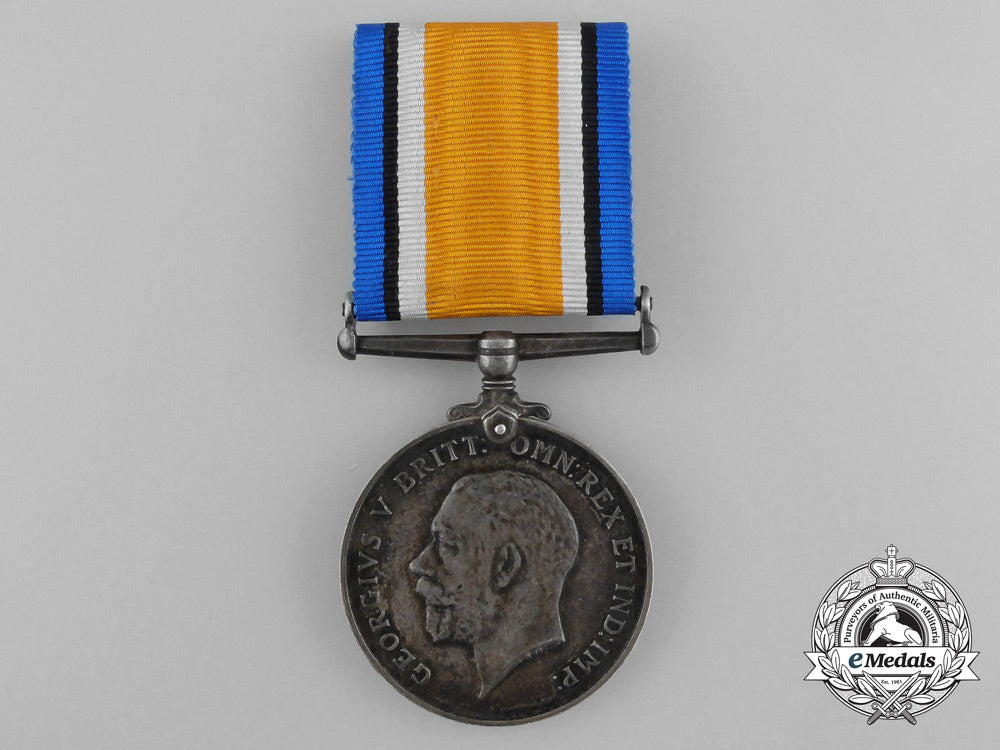
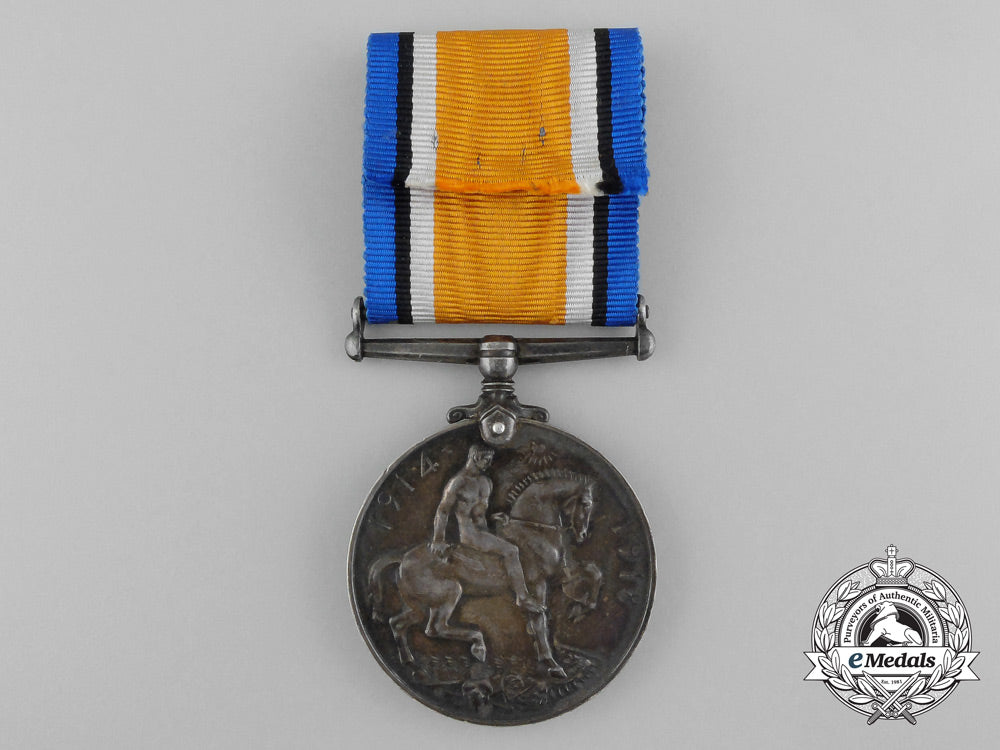
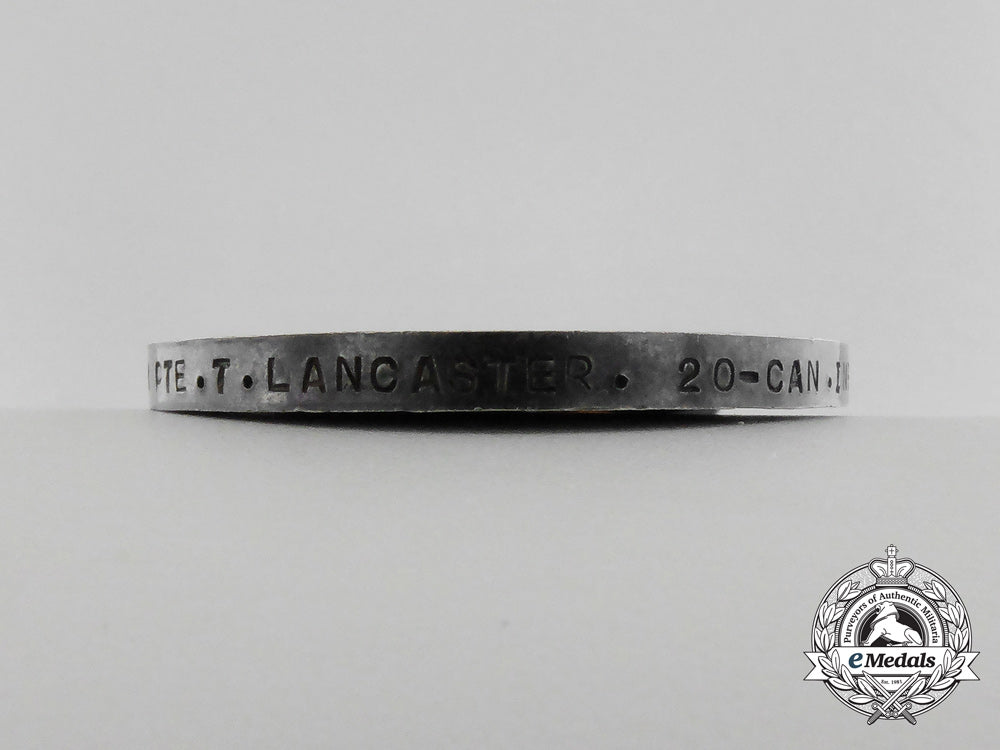
You May Also Like
Canada, Commonwealth. A Military Cross with Bar Group to Captain Newell, RCHA, 1944
C7202
Canada, CEF. A First War DSO and MC with Bar to Major McCaghey, Gallantry at Lens and Camery, 1918
C7199
Spain, Spanish State. A Medal of the Russian Campaign, with Case, by Diez y Campañia
EU24085
Germany, Third Reich. A Mixed Lot of Uniform Insignia for Military and Civil Service
G60811
Germany, Third Reich. A Mixed Lot of Shoulder Boards for Railway and Police Personnel
G60810
-
Canada, Commonwealth. A Military Cross with Bar Group to Captain Newell, RCHA, 1944
C7202
Add to CartRegular price $3,780 USDRegular price $0 USD Sale price $3,780 USDUnit price / per -
Canada, CEF. A First War DSO and MC with Bar to Major McCaghey, Gallantry at Lens and Camery, 1918
C7199
Add to CartRegular price $4,155 USDRegular price $0 USD Sale price $4,155 USDUnit price / per -
Spain, Spanish State. A Medal of the Russian Campaign, with Case, by Diez y Campañia
EU24085
Add to CartRegular price $340 USDRegular price $0 USD Sale price $340 USDUnit price / per -
Germany, Third Reich. A Mixed Lot of Uniform Insignia for Military and Civil Service
G60811
Add to CartRegular price $135 USDRegular price $0 USD Sale price $135 USDUnit price / per -
Germany, Third Reich. A Mixed Lot of Shoulder Boards for Railway and Police Personnel
G60810
Add to CartRegular price $135 USDRegular price $0 USD Sale price $135 USDUnit price / per
Do you have a similar item you are interested in selling?
Please complete the form and our client care representatives will contact you.
Sell Item